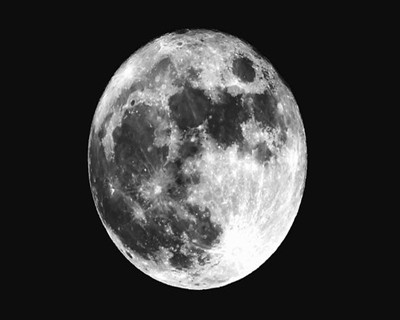(单词翻译:单击)
听力文本
This is Scientific American's 60-second Science, I'm Christopher Intagliata.
On July 20th, 1969, humankind finally set foot on the surface of the moon. Fifty years later a big mystery remains: how the heck the moon got there in the first place.
For decades, the thinking has been that four and a half billion years ago a Mars-sized protoplanet smashed into the Earth. When the dust settled, our moon remained, forged from the debris of Earth and the other object.
Problem is, as scientists have taken more and more precise isotopic measurements of the Moon they've found that it's nearly identical in composition to the Earth—not some other object.
"A problem I've been advertising as an isotopic crisis." Jay Melosh studies planetary impacts at Purdue University. Now, he says, a new theory in the journal Nature Geoscience may at least point to a way out of that isotopic crisis of the moon's chemical isotopes so closely resembling Earth's.

Here's the idea. The authors, a team of Japanese scientists, write that maybe in those early days of the solar system the Earth was sloshing with oceans of magma. Then, when the Mars-sized object slammed into those molten seas, their models predict a lot more Earth-derived material got ejected into orbit in the form of scorching vapors.
"Temperatures of tens of thousands of degrees. And so that expands at speeds that exceed the escape velocity of the earth, and in that way it injects material into orbit around the Earth."
That material rapidly coalesces, and bingo, you've got a moon. Melosh says there are still a few kinks to work out in the scenario. Still, he says, it's a step forward.
"Think of it as a major clue in a murder mystery or something like that. It could be a true clue toward the answer or it could be a deception—we don't know yet." So it could be that when astronauts started walking on the moon a half-century ago, they were really leaving footprints on the remains of the primordial Earth.
Thanks for listening for Scientific American — 60-Second Science. I'm Christopher Intagliata.
参考译文
这里是科学美国人——60秒科学系列,我是克里斯托弗·因塔格里塔。
1969年7月20日,人类终于踏上了月球表面。五十年后,一个巨大的谜团依旧存在:月球一开始到底是如何形成的?
数十年来,人们一直认为是45亿年前一颗火星大小的原行星撞击了地球。尘埃落定后,月球留了下来,它是由地球和其他物体的碎片形成的。
问题是,随着科学家对月球进行了越来越精确的同位素测量,他们发现月球的构成与地球——而不是其他物体——几乎相同。
“我一直在宣传的一个问题是同位素危机。”在普渡大学研究行星撞击的杰伊·梅洛什说到。现在,他说,《自然·地球科学》期刊上发表的一项新理论可能至少为解决同位素危机指明了出路,这一危机指月球的化学同位素与地球的如此接近。
想法如下。这篇文章的作者是一个日本科学家小组,他们写道,或许在太阳系早期,地球上到处都是岩浆海。之后,当火星大小的物体撞进这些岩浆海时,他们的模型预测,有更多来自地球的物质以灼热蒸汽的形式被喷射到轨道上。
“蒸汽温度高达数万度。蒸汽的膨胀速度超过了地球的逃逸速度,然后以这种方式将物质注入地球周围的轨道。”
这些物质迅速结合,没错,之后就形成了月球。梅洛什说,这种想象情景仍有一些问题需要解答。不过,他说这是向前迈出的一步。
“可以将其想成谋杀案之类的主要线索。这可能是通往答案的真正线索,也可能是场骗局,现在我们还不清楚。”因此,当半个世纪前宇航员开始在月球上行走时,他们可能正在原始地球的遗迹上留下脚印。
谢谢大家收听科学美国人——60秒科学。我是克里斯托弗·因塔利亚塔。
译文为可可英语翻译,未经授权请勿转载!
重点讲解
重点讲解:
1. set foot on 踏上,涉足(某地) ;
No man has ever set foot on that rocky island; it's impossible to land there.
没人涉足那个岩岛,不可能在那儿上岸。
2. how the heck (尤在迷惑或恼怒时用于疑问句中表示强调)到底,究竟;
How the heck we're gonna put some value on all these.
这些我们到底要付出多大的代价。
3. in the first place 起初;一开始;
What brought you to Washington in the first place?
最初是什么让你来到华盛顿的?
4. work out 想出,得到(解决方法);解(谜) ;
It took me some time to work out what was causing this.
我花了一些时间才弄清此事的起因。


